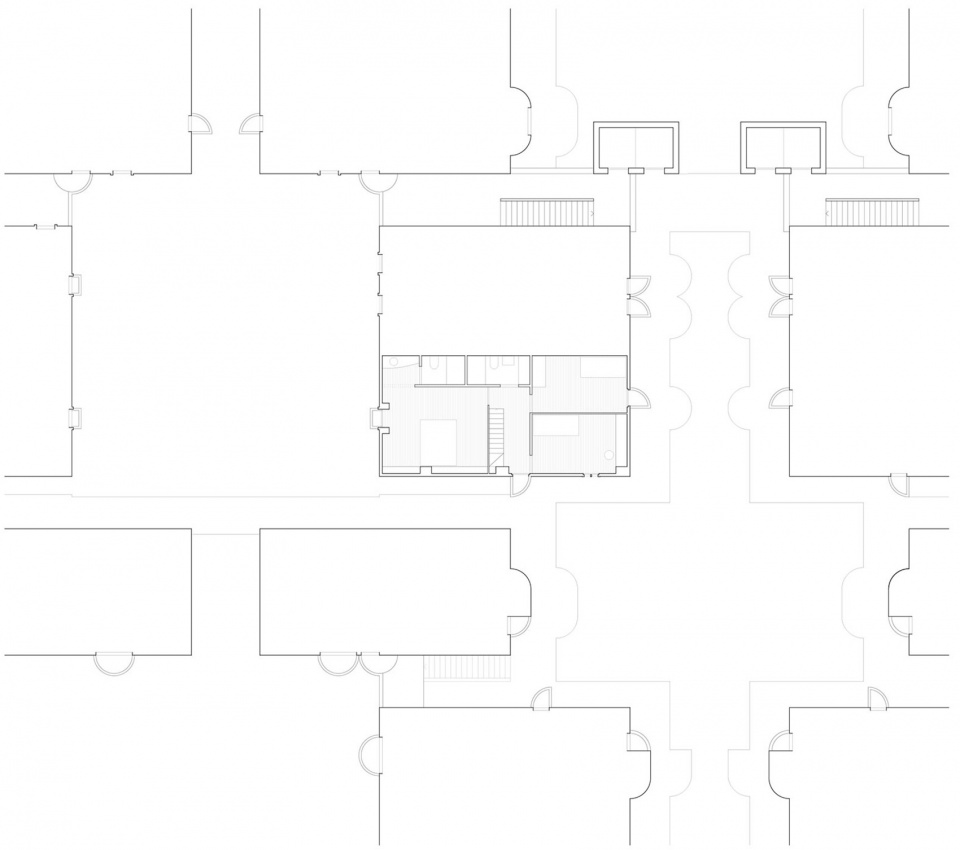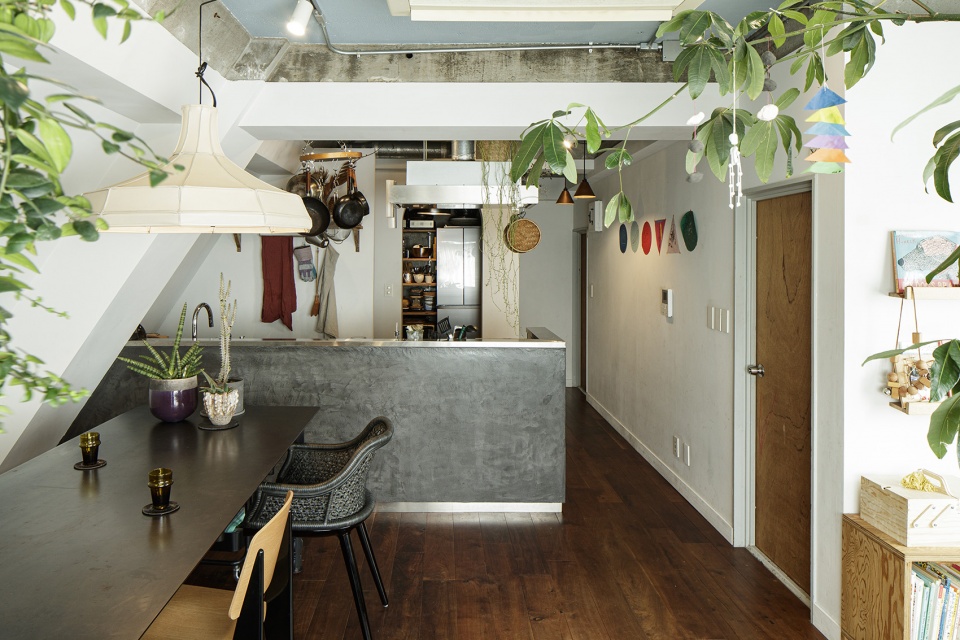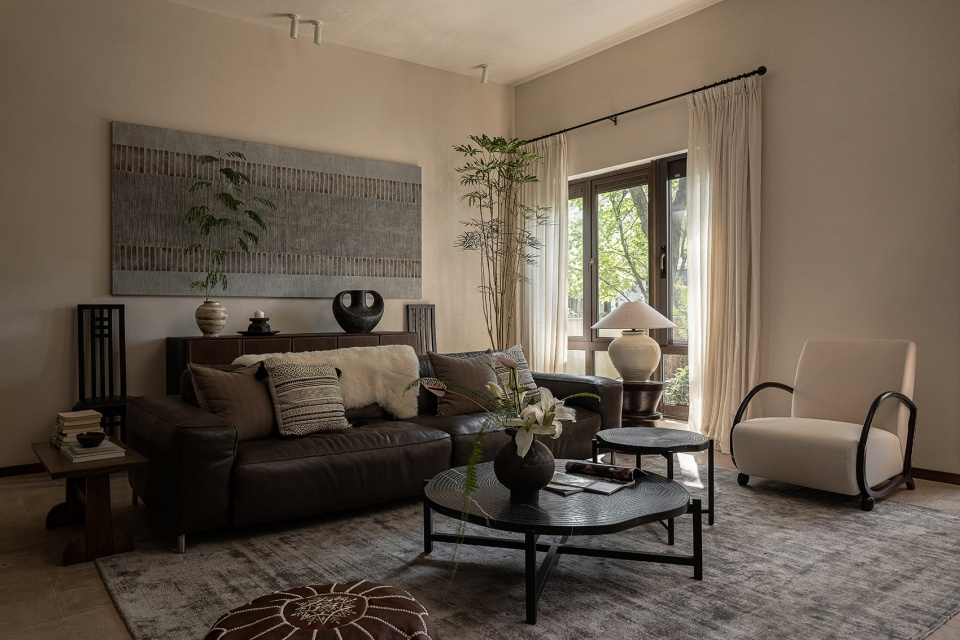

位于巴塞罗那Sant Just Desvern地区的瓦尔登七号(Walden-7)项目(1973-1975),是Ricardo Bofill在20世纪60年代至70年代于西班牙各地发展的一系列实验城市主义项目中的巅峰之作。经历了马德里太空之城的失败,瓦尔登七号公寓作为当时最能展现其野心的项目,同时也最具争议性。随着时间推移,建造过程中产生的问题也逐渐显现,以至于在80年代曾被提议将整个建筑拆除。最终,经过高昂的维护措施得以保留,目前此建筑已被列为建筑遗产。
▼项目外观,Exterior of the project ©Bonell+Dòriga
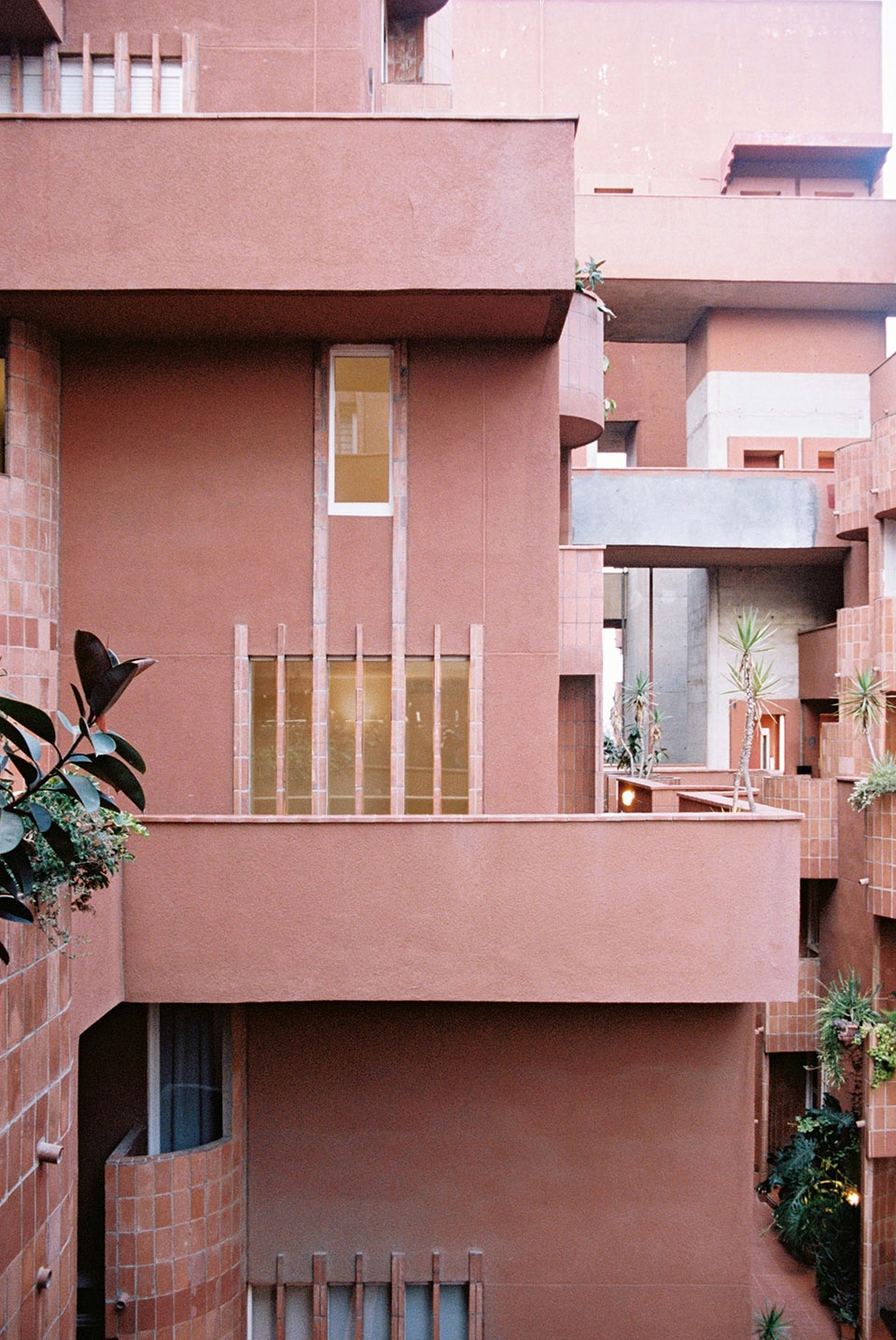
The project of Walden-7 (1973-75) in Sant Just Desvern (Barcelona) is the culmination of the experimental urbanism Ricardo Bofill developed during the 1960s and 70s in various places of the Spanish geography. The series of projects built in Sitges, Reus, and Calpe, along with the failed utopia of the City in Space in Madrid, concludes with the construction of Walden-7, the most ambitious of his projects until that point, but also the most polemic: the problems derived from its construction extend over time, to the point in which the demolition of the whole building is considered in the 1980s. Finally, and after a costly intervention, the building is listed as a heritage asset.
▼瓦尔登七号平面图—项目位于建筑遗产中的一处住宅,
Master plan of the Walden-7 – a residence inside the very famous heritage ©Bonell+Dòriga
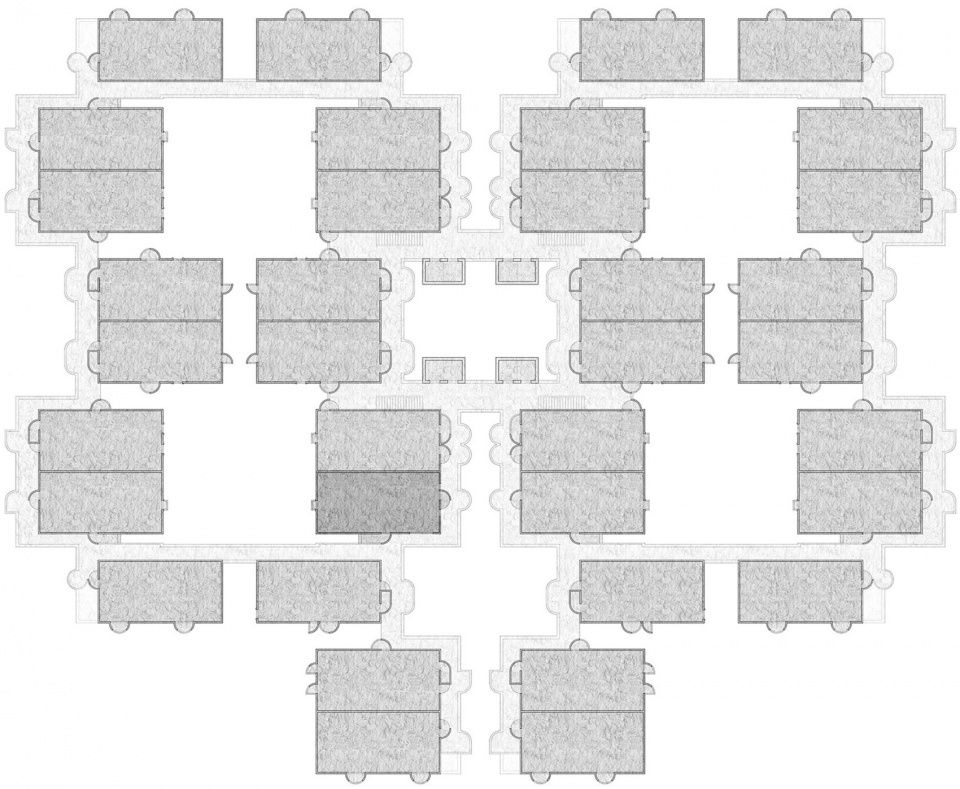
为实现地球资源可持续发展,将现有结构的进行修复已成为必要之选。在Bonell+Dòriga团队为建筑中446套公寓其中之一进行改造时,也随之而来一个新的思考——如何处理当代建筑遗产。这是一座相对近代的建筑,它的设计者在此前仍然活跃在建筑领域。与此同时,这也是一件被遗忘了几十年的建筑作品,通过社交媒体的广泛传播,频繁出现在大众的视线,也因此有效地激发了建筑业对于社会、城市或有趣背景的探索,以及审美方面大胆尝试的实验精神。
In a moment in which the restoration of existing structures is seen as a necessary step towards a more sustainable balance of our planet’s resources, the project for the refurbishment of one of the building’s 446 apartments presents the added question of how should we deal with contemporary architectural heritage. This is a building so recent that its authors not only still live; they are also still active in their profession. And this is, at the same time, a work of architecture which after decades of oblivion, it is currently reviving due to its photogenic presence in social media and an ambition to recover a certain experimental spirit in architecture: some times from a social, urban, or playful background, other times from the purely aesthetical.
▼项目概念图,Concept of the project ©Bonell+Dòriga
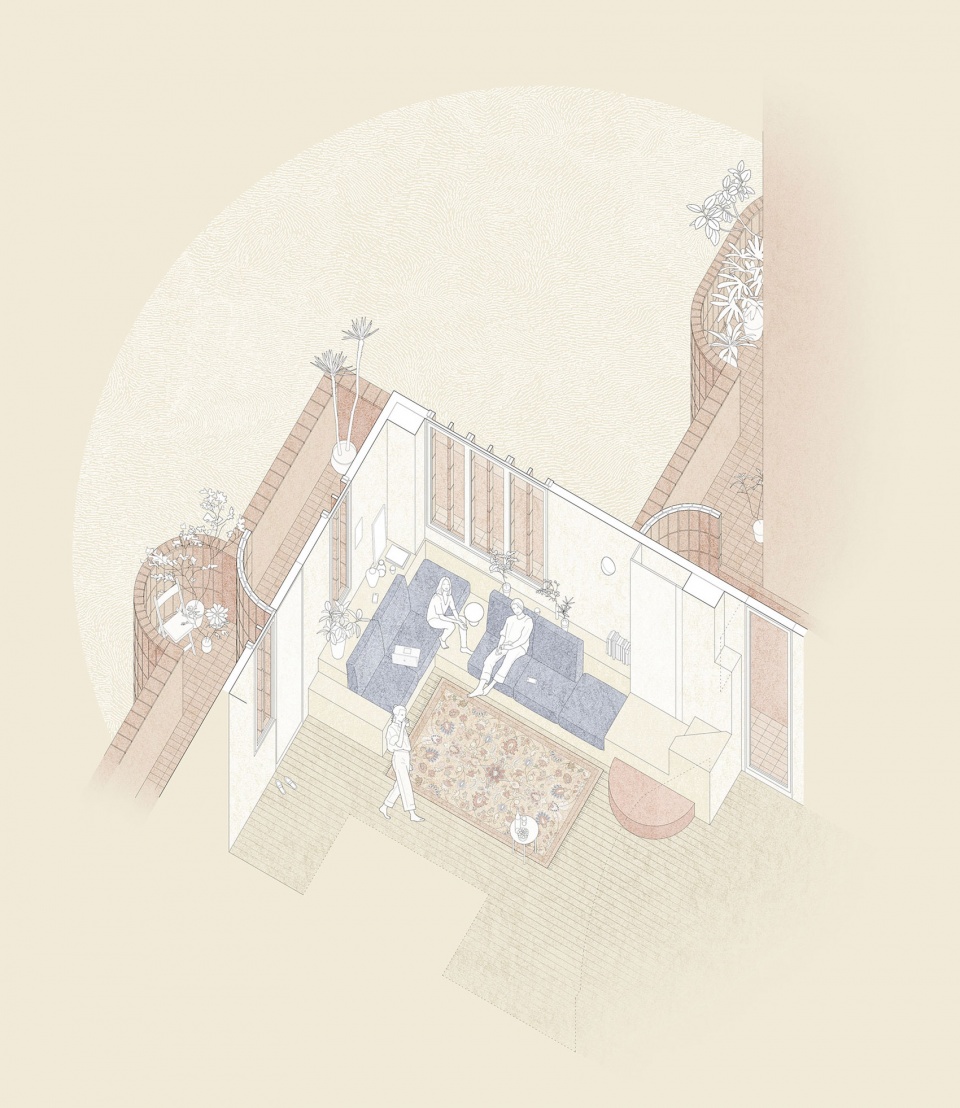
Bonell+Dòriga团队共为这一套位于建筑12层及13层的跃层住宅设计了四处空间。一层被改造成一处宽敞的开放空间,二层则为卧室区域。然而,在这个项目中,相对于空间的配置,氛围营造以及建筑表达显得更为关键。
Four modules developed in two floors define this dwelling situated in the levels 12th and 13th of the building. The ground floor is transformed into a large open space, while the bedrooms are placed in the first floor. In this project, however, it is more important to talk about context and about language, than it is to discuss the configuration of its spaces.
▼项目内景,Arrangement of the project ©Bonell+Dòriga
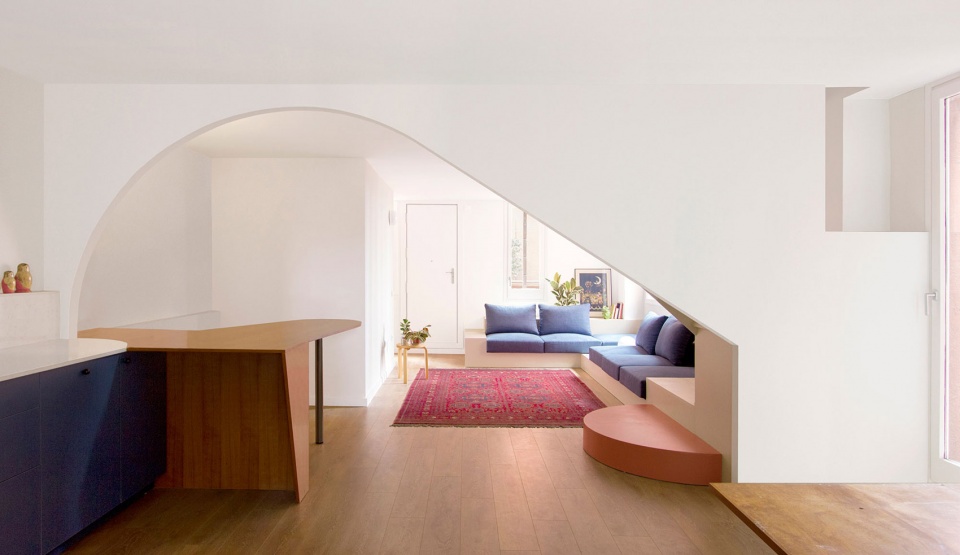
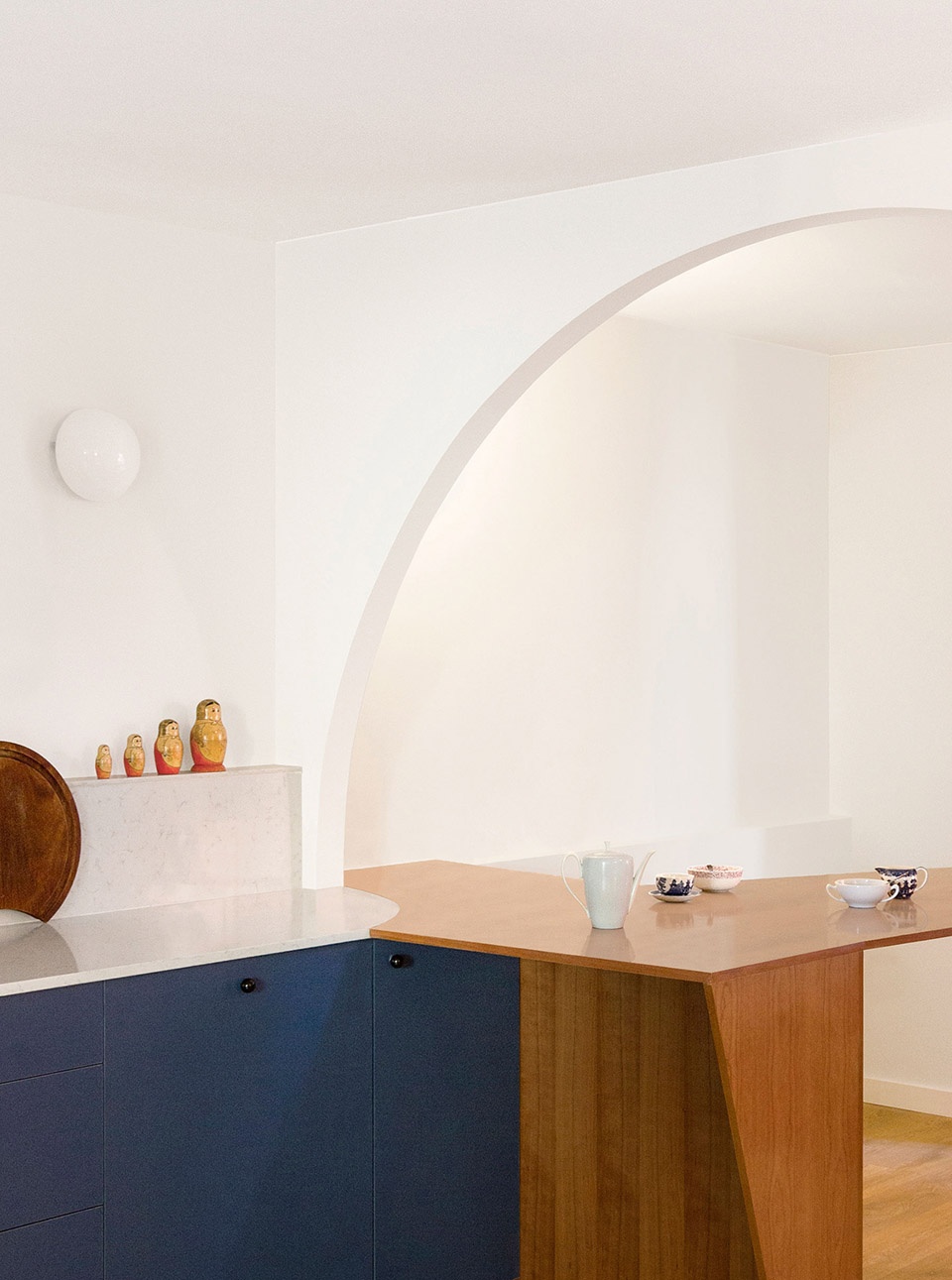
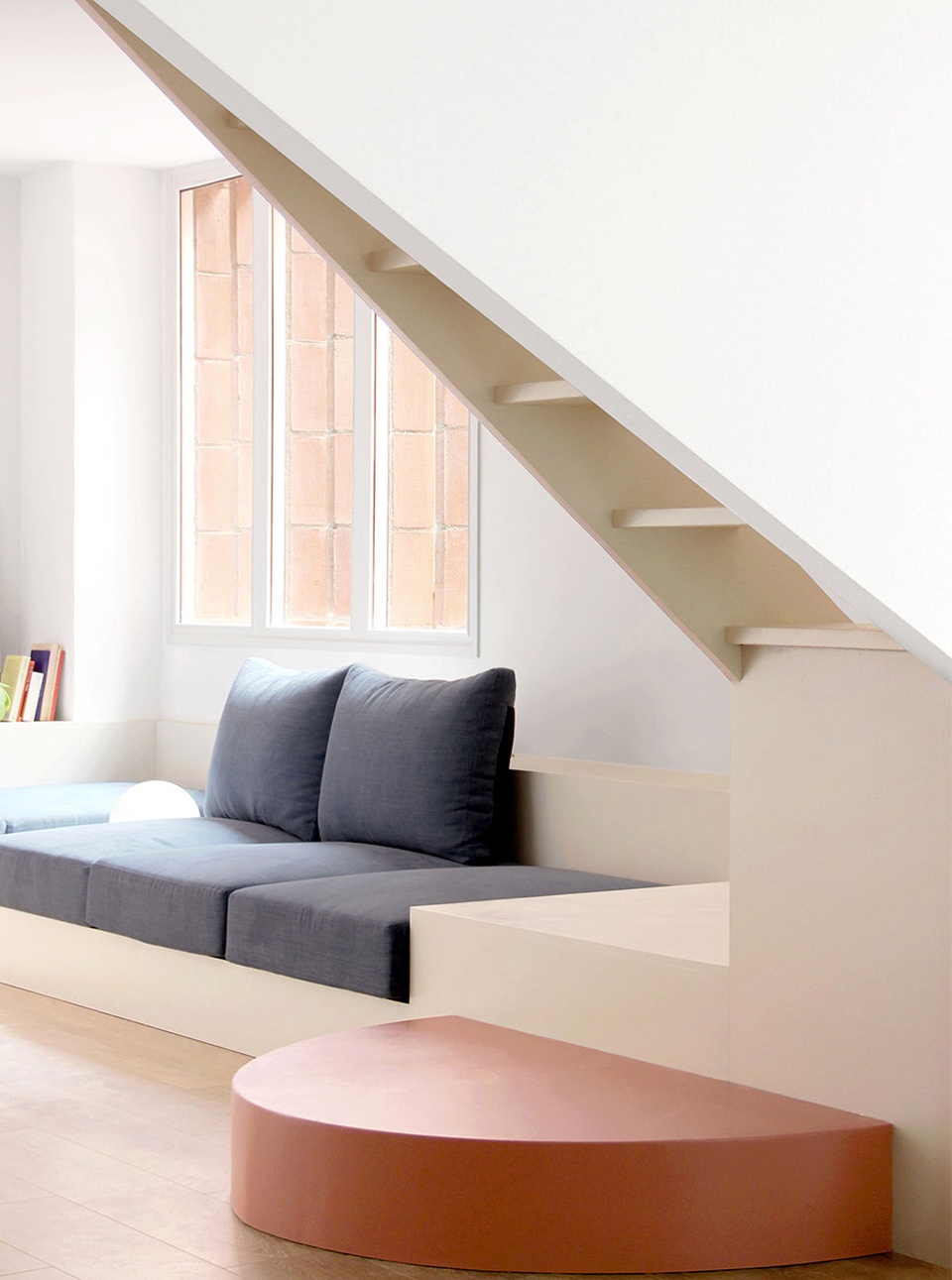
▼餐厅空间,Dining area ©Bonell+Dòriga
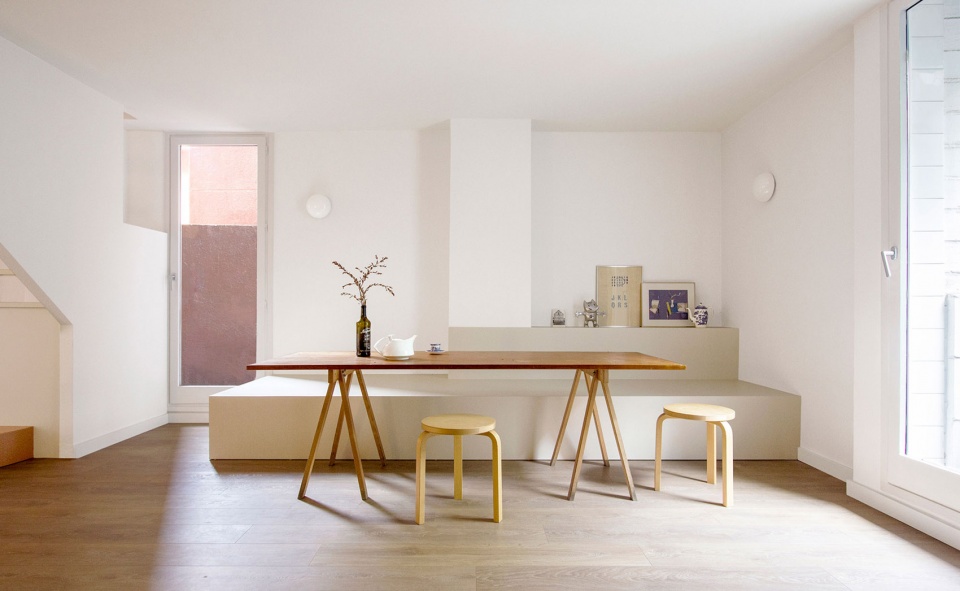
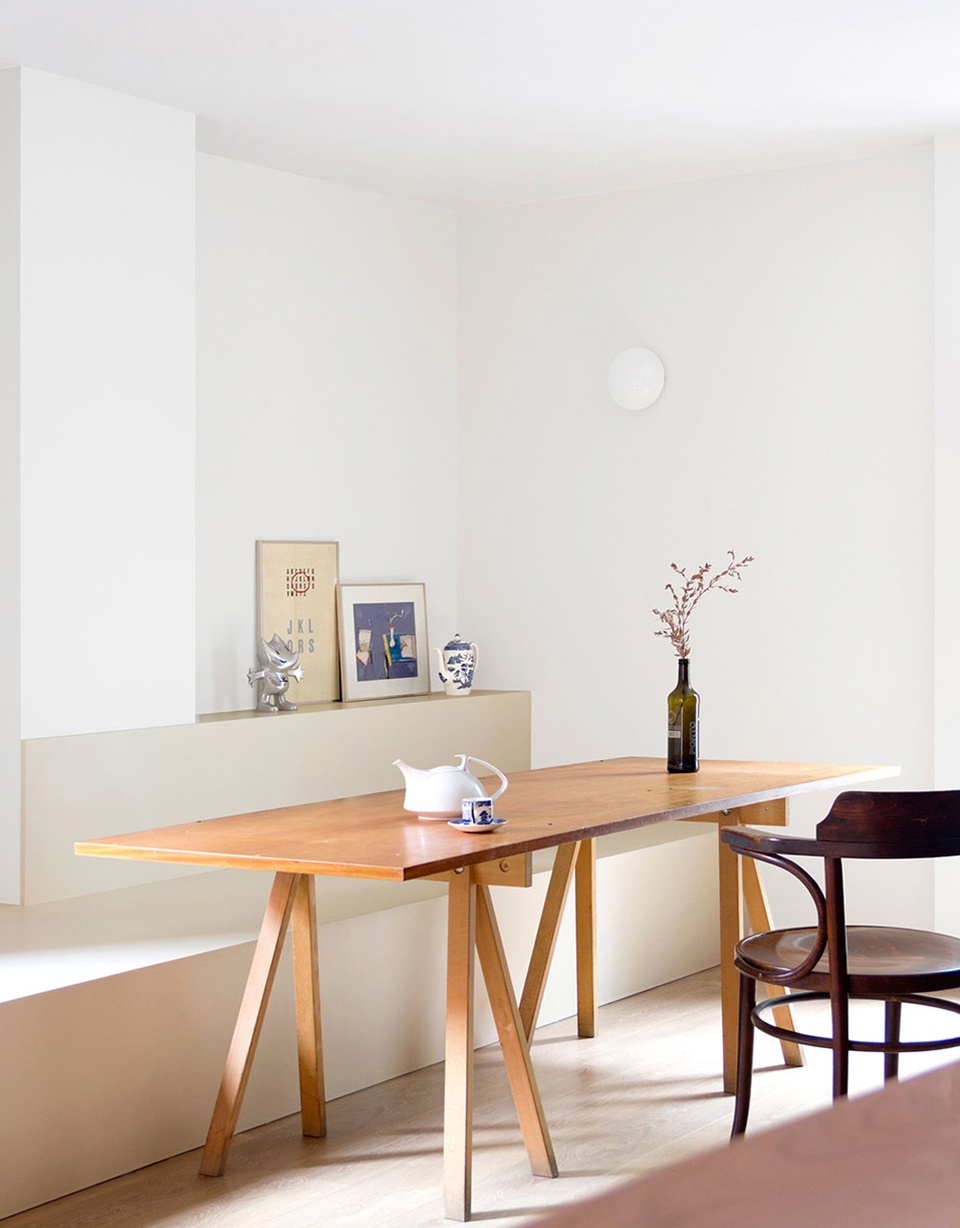
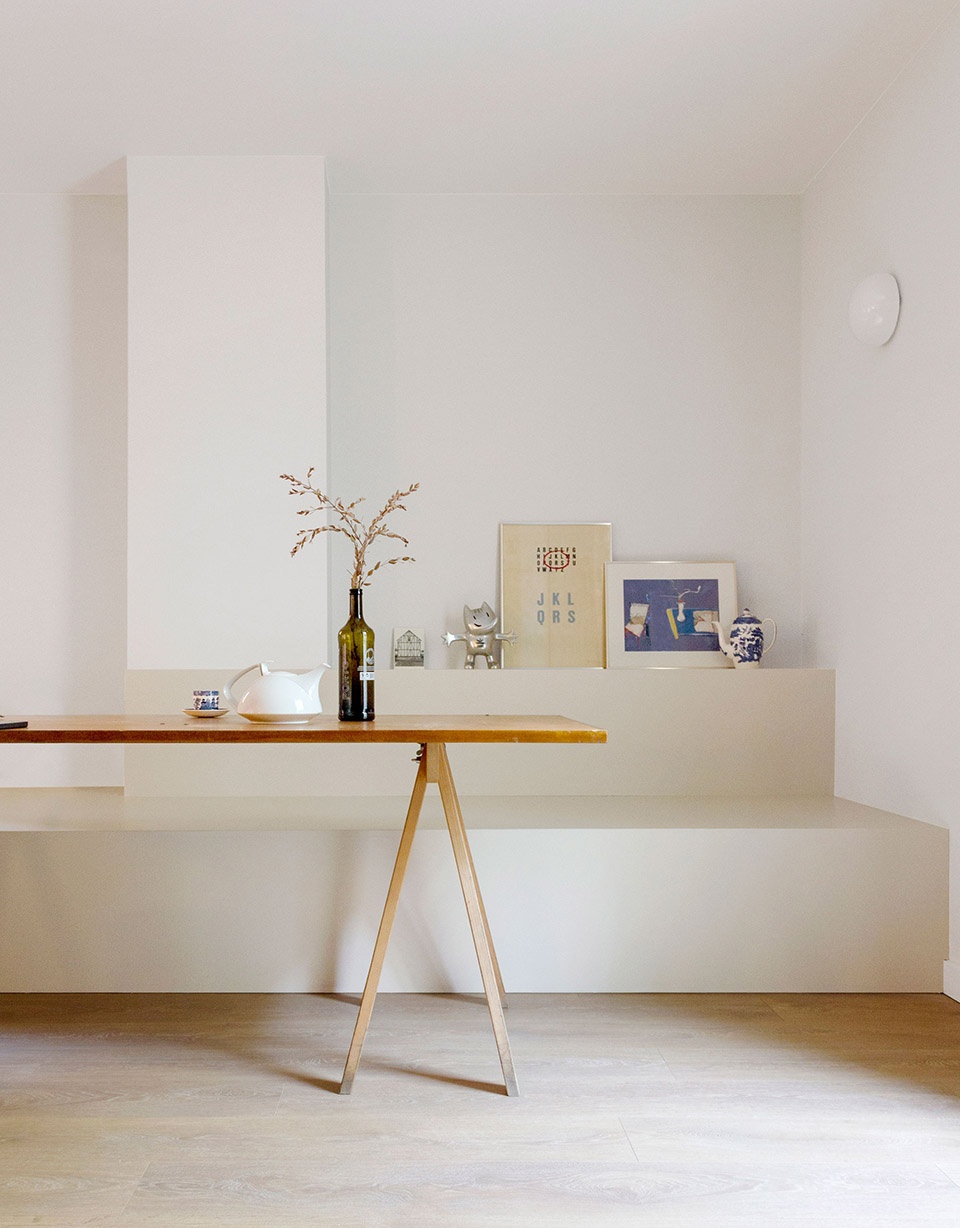
建筑群的中心区域,是设计中不可忽略的部分,即使在内部也是如此。公寓里每一扇窗户都是构成瓦尔登七号的一部分。北面房间的光线带有绿松石的色彩,南面房间的光线则微微泛起红色。
Located in the central part of the complex, its belonging to the building is practically inescapable, even in its interior. Every one of the apartment’s windows frames fragments of Walden-7. Light comes in shaded in turquoise in the northern rooms, more reddish in the south.
▼客厅区域,Living room ©Bonell+Dòriga
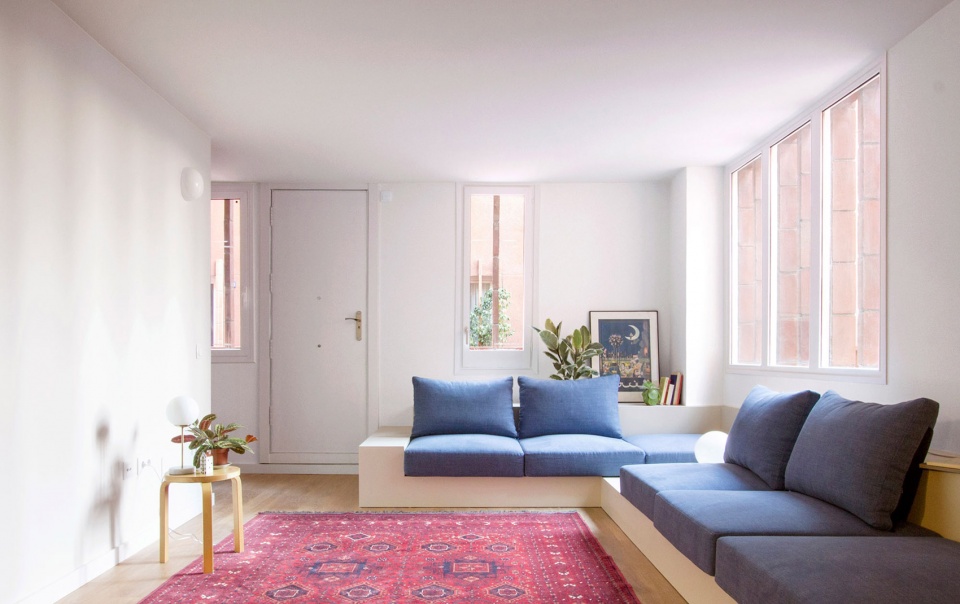
▼光线透过窗户照射进室内,Light comes in shaded through the window ©Bonell+Dòriga
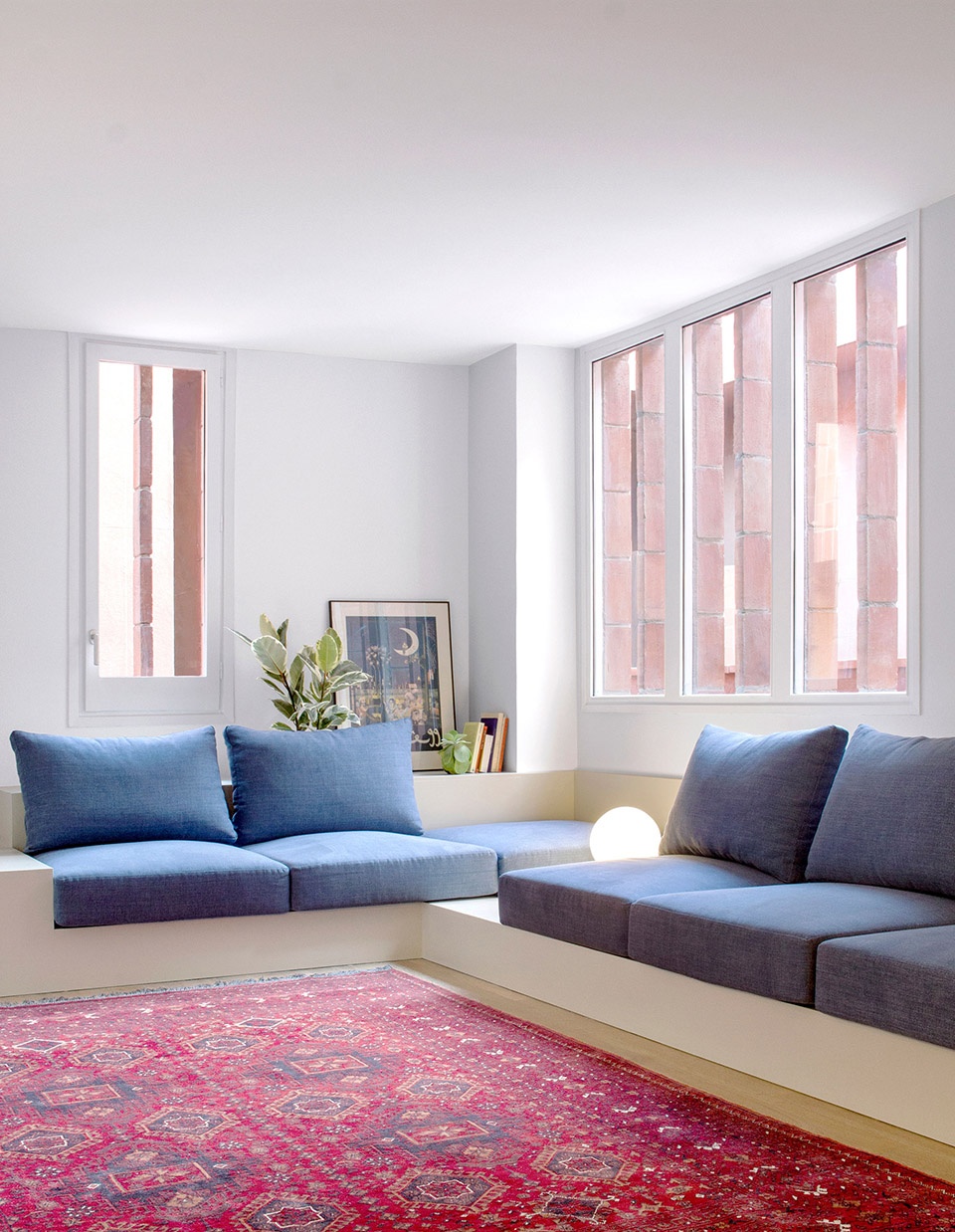
在这种情况下,团队的介入必须与Bofill建筑团队此前打造的丰富建筑结构建立联系。项目从外部引入了色彩鲜艳的砖红色、深蓝色和沙色。同时,在减少施工的前提下,也对现有的公寓内部地形进行重新思考,以适应新业主及未来用户的需求。宽长的长凳变成沙发,最终与现有楼梯连接,楼梯处完整保留原有台阶,仅重新做了刷漆处理。几何形状的运用在空间的配置中无处不在,浴室中出现的双色瓷砖即采用阶梯状铺设,其余还包括红色半圆形台阶、圆形灯光、拱形分隔或是圆形镜子。
In this context it was essential that our intervention established a connection with the rich fabric of Bofill’s architecture, but without trying to mimic it. The project introduces flashes of colours from the outside in: brick red, dark blue, and sand. The topographies that Bofill envisioned for the interior of the apartments, but which were rarely built, are re-thought and adapted to the needs of the new owners and future users, with wide benches that turn into sofas, that end up connecting with the existing staircase, which is kept in its upper steps, only painted. The stepped geometry appears in the laying of the two-toned tiles in the bathrooms. And the circle shape, so ubiquitous in the configuration of the building and its morphology, materializes in various ways: the red step, the lights, the arched divisions, or the mirrors.
▼拱形阳台,The arched balcony ©Bonell+Dòriga

▼半圆形台阶及拱形分隔、圆镜,The semi-circle step & the mirror and the arched division ©Bonell+Dòriga
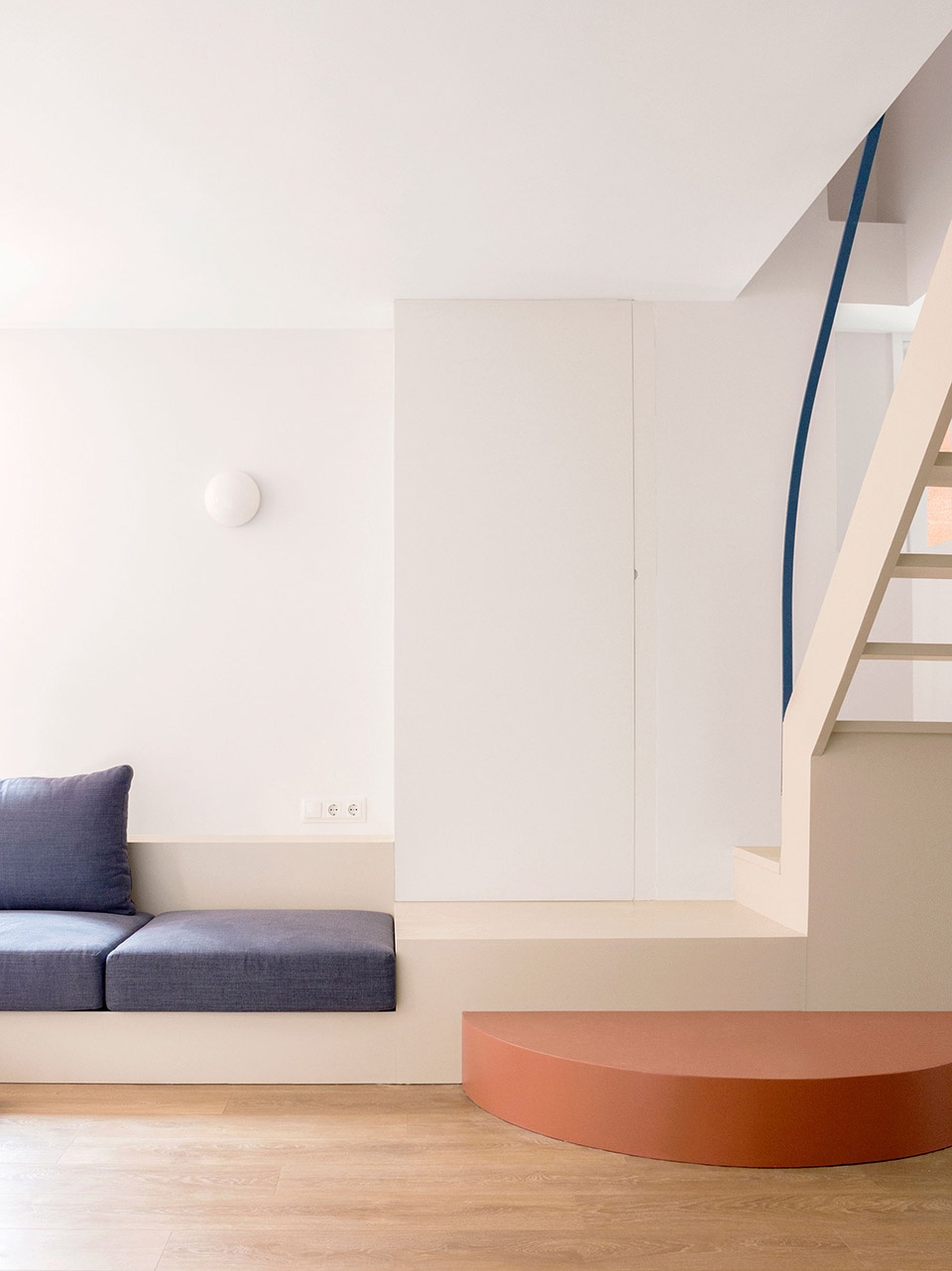
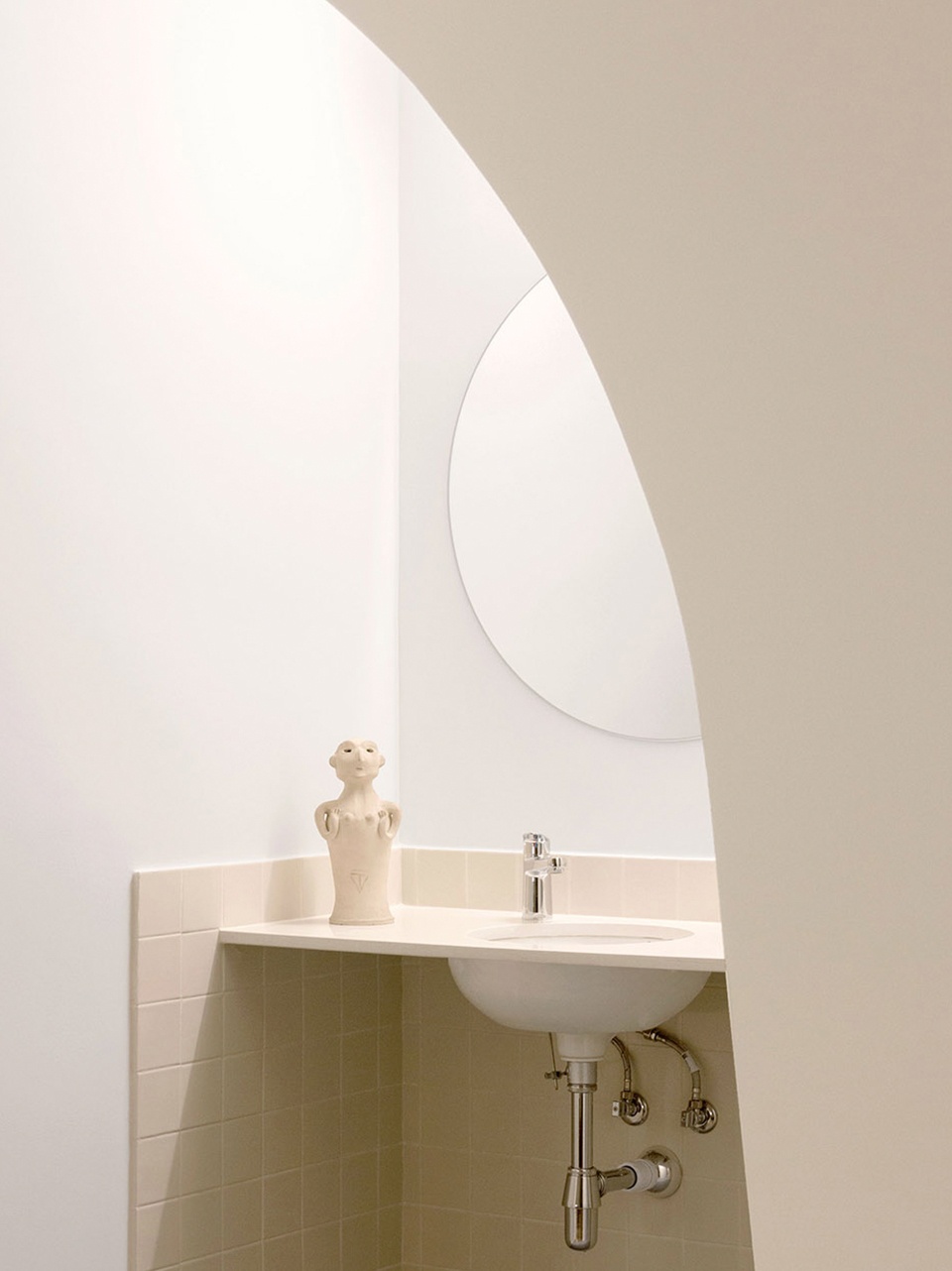
▼以阶梯状铺设的淋浴间双色瓷砖,
The stepped geometry appears in the laying of the two-toned tiles in the bathrooms ©Bonell+Dòriga
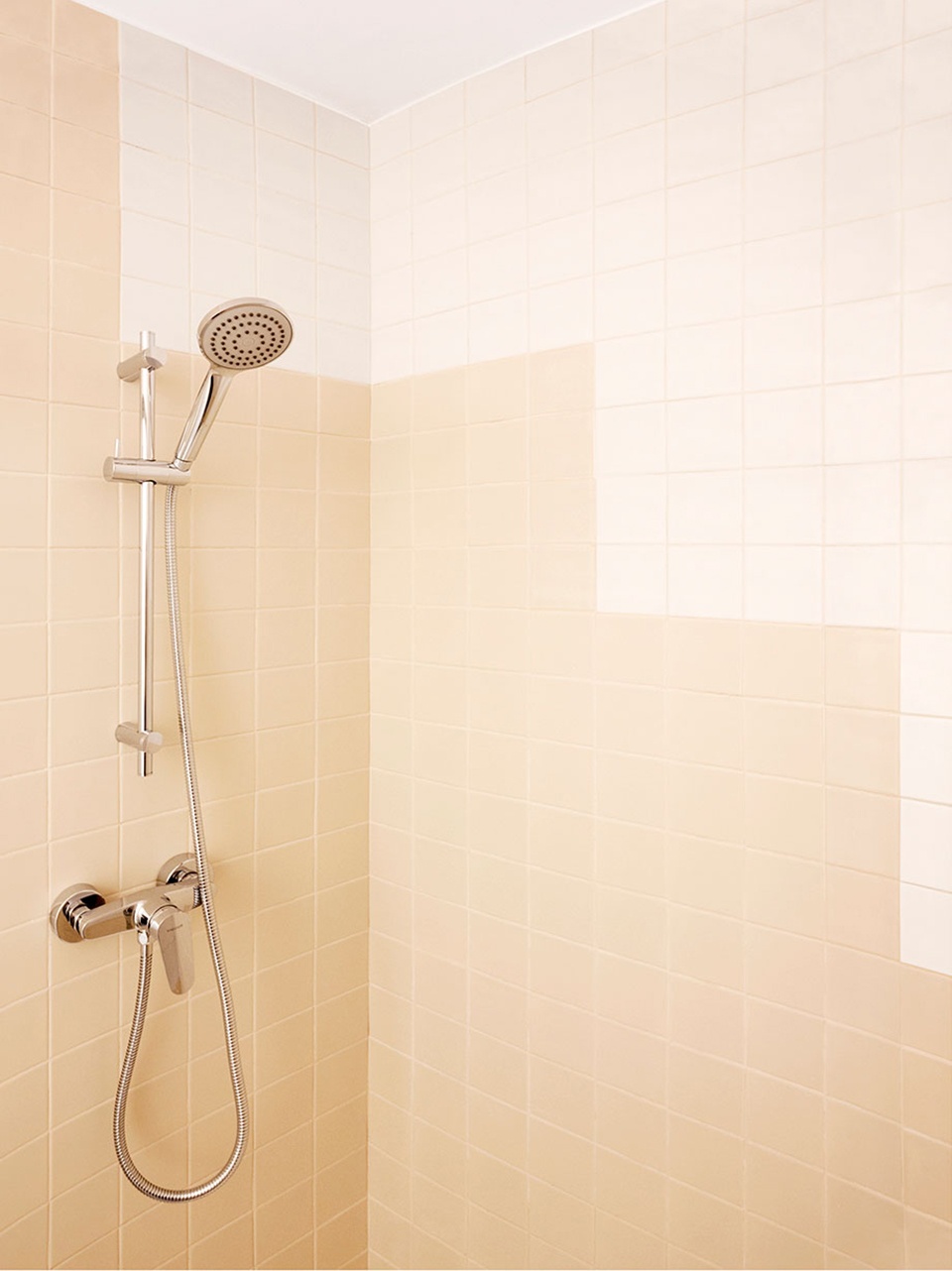
▼一层平面图,Ground floor plan ©Bonell+Dòriga
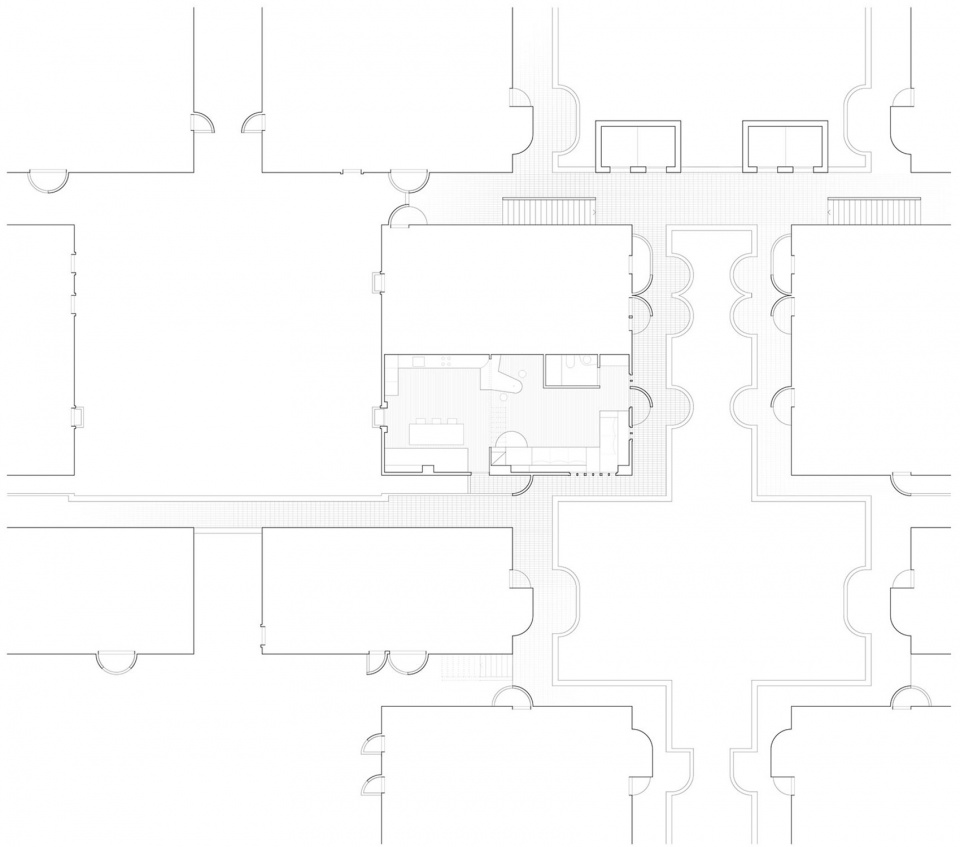
▼二层平面图,1st floor plan ©Bonell+Dòriga
